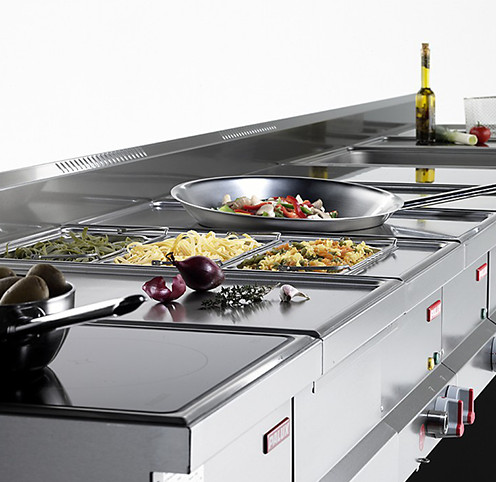Stainless steel kitchen equipment: 4 key points
“Do stainless steel products rust?” – This is one of the most common questions asked by gastronomic business developers when choosing their kitchen equipment. Many of us know that stainless steel is a universal metal that can be used in a wide range of areas, from construction to the smallest kitchen appliances. However, only the most savvy customers who have delved into the production processes and analysed many examples can tell what makes one product different from another. To make an informed decision about food-grade stainless steel equipment, you should understand the key differences in the classification of this alloy, which include the manufacturing technology and the design solutions. You should also consider the design of the kitchen you are planning; in particular, whether it is open or closed.
Stainless steel grades
Since 1913, when the metallurgist Harry Brearley invented an alloy with exceptional corrosion resistance, stainless steel has been favoured by as the main material used by the manufacturers of professional kitchen equipment because it is durable, long-lasting and hygienic. While there are over 250 grades of stainless steel, AISI 304 is the most common. It is popular because it is durable and suitable for manufacturing restaurant tables, hoods, sinks, stands, racks and shelves.
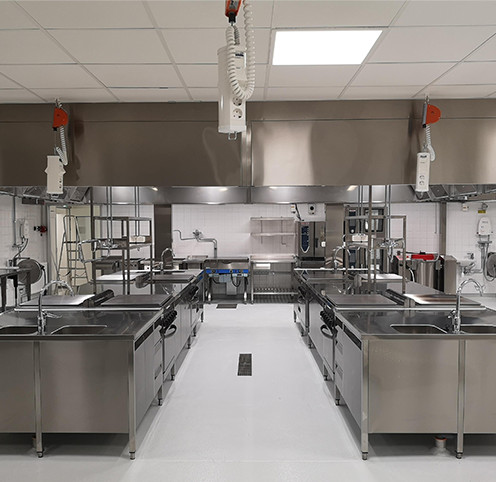
This grade contains 18 percentage chromium, which binds the oxygen on the surface of a product, forming a film that protects the iron from oxidation (rust), as well as 8 percentage nickel that increases the corrosion resistance. The higher the nickel content, the more corrosion-resistant that stainless steel is. If you are working with salty and acidic products, e.g. citrus fruits, vegetable and fruit juices, grade 316 steel products are recommended. Their chemical composition is more resistant, making it easier to remove food scraps from surfaces.
Manufacturing technology
When choosing stainless steel tables, sinks or shelving, as well as other products, it is also important to pay attention to the design technology. Typically, this equipment is used all day long, so must be convenient and safe to use and maintain. One of the most important areas to examine is the edges. To save time and costs, manufacturers sometimes neglect the proper sanding and rounding of welded corners. In a humid kitchen, where the skin can become soft and vulnerable, sharp corners pose a risk of injury.
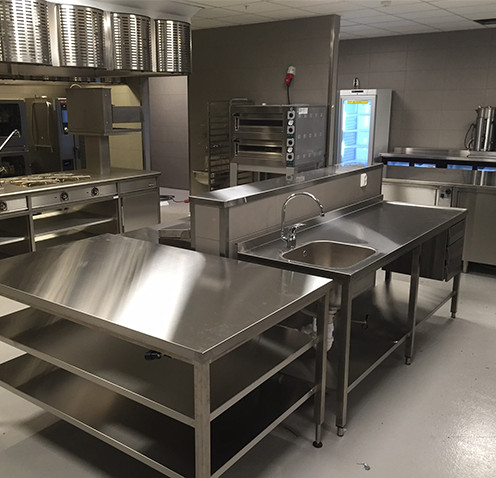
Mindaugas Jonuškis, Head of the stainless steel manufacturing company Novameta, stated that they are well aware of these specific issues in the HORECA sector. Therefore, special attention is paid to the safe use of products: “All our solutions are designed to avoid sharp, upright corners that get in the way – they are always sanded and blunted. Every product is inspected by the representatives of our quality department, so it only reaches the customers when safety is ensured.”
Another important aspect is the integrity and resistance of tabletops, which require a special pressing technology: “A two-component adhesive, compressed with a laminated, moisture-proof board, ensures not only that the surface maintains its integrity, but also provides resistance to various temperatures. In this way, they are sure to withstand hot pans.”
The Head of Novameta warned that low-quality products can be identified from the waves that form on the surface: “If the tabletop is glued with a silicone spray every ~ 5 cm, it not only creates a wave effect but the silicone also evaporates in contact with hot surfaces. The unevenness only becomes more noticeable as time goes by, and of course, it hinders the work in a kitchen. Generally, such a defect becomes noticeable quickly; then, after just a few months the table will look like it has been used in the kitchen for decades.”
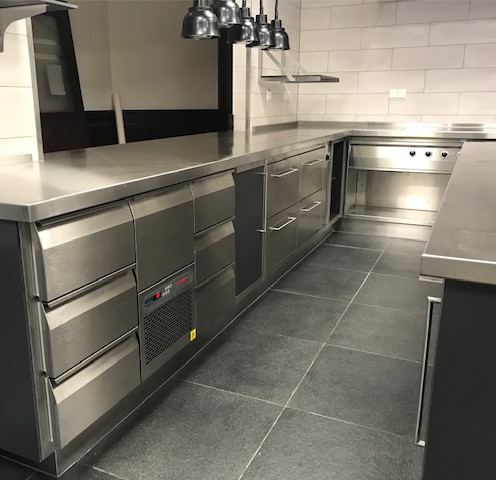
If you are looking to buy a table, you should visit a couple of kitchens and evaluate the quality of the stainless steel products and the rate of wear in person.
Repainting steel is not a problem
Some restaurants use stainless steel equipment for more than function purposes. It can become part of the interior decor, if the kitchen is open and visible to guests. Kitchens often use standard products, but they can also be designed according to the needs of each customer, by adapting the depth, height and width of the equipment according to the individual technological features of the premises.
If you wish to match the colour of the equipment to your interior, the steel can be painted and, if necessary, repainted after a few years when your colour scheme needs an update or a complete transformation.
Another important consideration is that used standard stainless steel equipment is in high demand. Therefore, if the situation changes and you no longer need these products, you will easily find a new home for your old equipment.
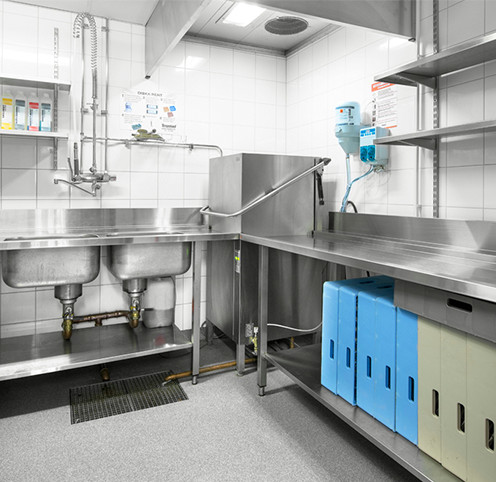
Cleaning: how to avoid damage
The answer to the question of whether stainless steel products can last forever is directly related to maintenance and cleaning. The surface of stainless steel does not absorb the foods and chemical detergents that come into contact with it. However, it is important to use these products properly and clean the equipment appropriately.
To remove fingerprints and light dirt, it is best to use a spray cleaner and a soft cloth for polishing with the chosen cleaning product. When cleaning, avoid moving across the surface and instead go in the sanding direction.
For harder to clean issues, nylon cloth and specialised stainless steel cleaners are recommended to remove limescale and rust. After cleaning, the residue of the cleaning products should be removed with water and the surface dried to avoid water stains.
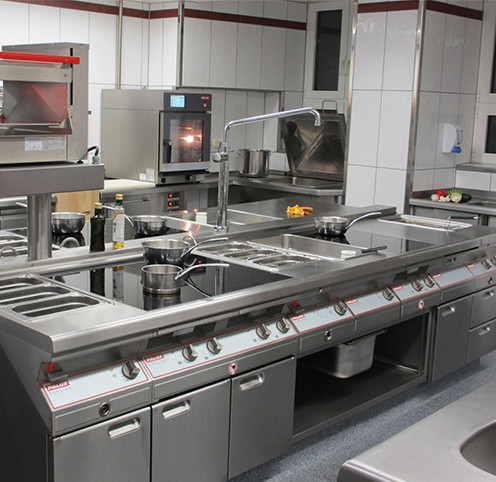
To remove heavy soiling, it is recommended to use a stainless steel surface cleaner that contains phosphoric acid. Again, the residue of the cleaners should be washed off with water and the surface dried.
In the event of corrosion (rust), a special paste or acid can be used to remove it. However, it should be noted that the appearance of the surface may change after cleaning with an acidic agent.
Jurgita Viltrakienė, an expert in the hygiene requirements for public catering companies, suggested three simple rules that should be remembered when cleaning tabletops and other surfaces that come into direct contact with food:
- use professional disinfectants for food surfaces;
- follow the manufacturer’s instructions;
- dry the surface with a disposable paper towel after cleaning, to maintain the maximum hygiene.
